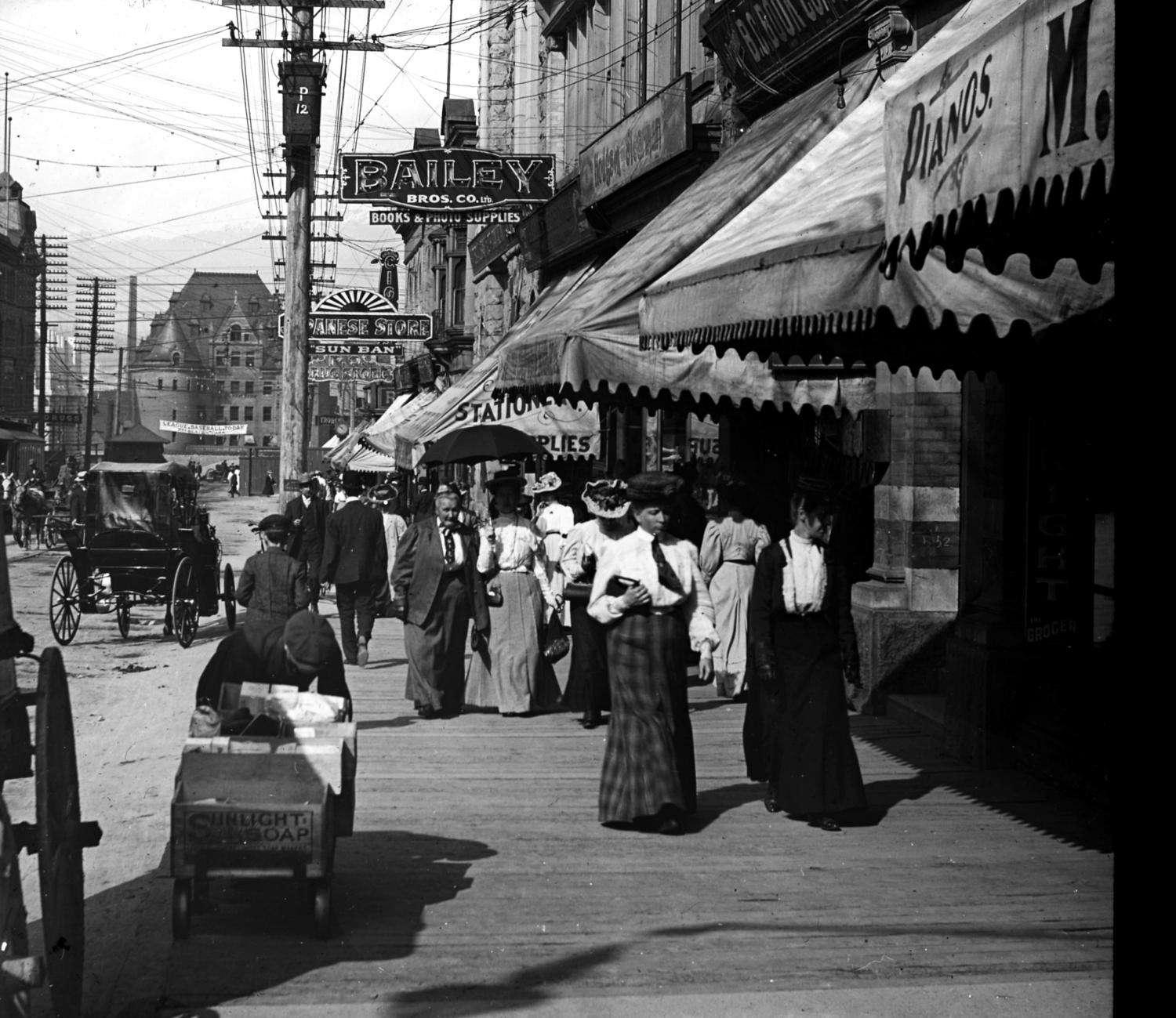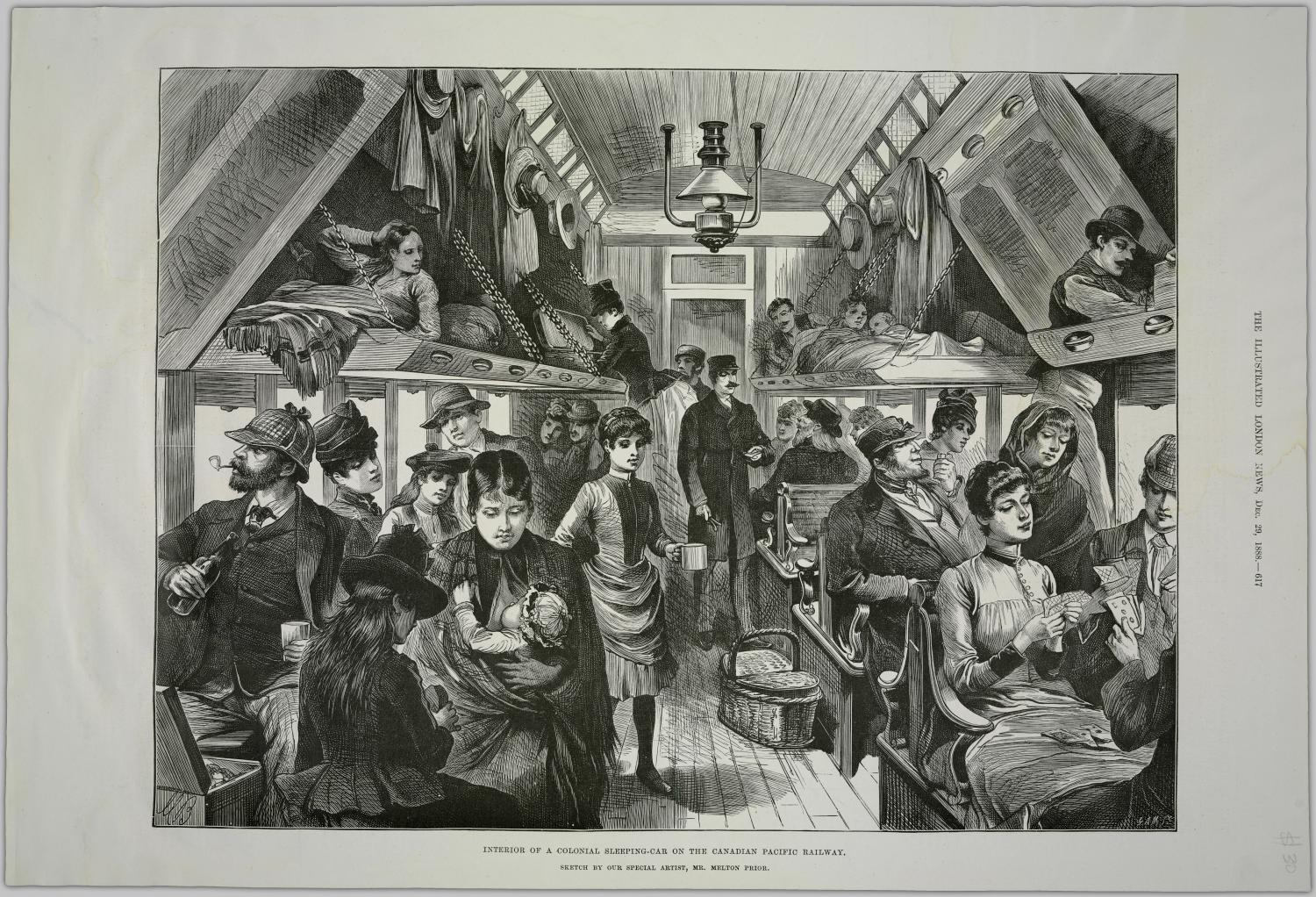CPR Ends in Vancouver
A railway transforms a fledgling town called Granville into B.C.'s largest city
Date: 1886
In the 1880s, at the height of construction on the transcontinental railroad, the Canadian Pacific Railway (CPR) met a formidable foe: land speculators. At the time, Port Moody was set to be the CPR’s western terminus. In anticipation, industrious individuals had bought swaths of property along the eastern end of Burrard Inlet, hoping to sell to the CPR for a profit.
But the railway syndicate had no intention of buying; they expected to be given the land, free of charge. In secret, they entered talks with the provincial government. And in 1884, B.C. granted the CPR 6,000 acres of land along the Burrard Peninsula in the new townsite of Granville.
With the land secured, the CPR announced that their Pacific terminus would have to move further west by 14 miles. Port Moody was too shallow for their fleet of ocean-bound ships. Now, the railway would end in Granville, close to Coal Harbour. On April 6, 1886, Granville was renamed Vancouver and incorporated as a city. A year later, on May 23, 1887, the first passenger train pulled into the city’s new train station.
The young city exploded. From 1884 to 1891, the population jumped from about 400 residents to almost 14,000. It attracted businesses and banks, eventually overtaking Victoria as the industrial and commercial centre of the province. English writer and economist J.A. Hobson noted Vancouver’s new status as a banking town. “[T]his is a land of speculation,” he wrote, “in mining properties, lumber lands, fruit lands, and, above all, in city lots, the price of which has doubled in the last two years.”
Vancouver’s commercial success owed no small part to the inner workings of the CPR itself. Directors of the railway syndicate also sat on the boards of institutions like the Royal Bank of Canada, the Bank of Montreal, and various international oil companies.
The city was the CPR’s sandbox. It drew the street layout, determined where the most affluent neighbourhoods would be and had streets named after its officials and board members. CPR money also paid for a hotel, an opera house, and the new city centre built around Georgia and Granville. But the munificence of the CPR stayed in Vancouver. The rest of the province was largely neglected, particularly the north. They would have to wait for their own railway for another three decades.
Sources:
1. Building the Railway. Province of British Columbia, 19 Jan. 2017, www2.gov.bc.ca/gov/content/governments/multiculturalism-anti-racism/chinese-legacy-bc/history/building-the-railway.
2. Canadian History: Post-Confederation, by John Douglas Belshaw, BCcampus, BC Open Textbook Project, 2017.
3. Canadian Pacific Railway. Royal B.C. Museum, royalbcmuseum.bc.ca/exhibits/bc-archives-time-machine/galler08/frames/cpr.htm.
4. Chow, Lily. Blood and Sweat over the Railway Tracks. Ronsdale Press, 2015.
5. Chow, Lily. Chasing Their Dreams: Chinese Settlement in the Northwest Region of British Columbia = Zhui Qun Meng Xiang. Caitlin Press, 2000.
6. Lavallé, Omer. “Canadian Pacific Railway.” The Canadian Encyclopedia, 6 Mar. 2008, www.thecanadianencyclopedia.ca/en/article/canadian-pacific-railway.
7. Sommers, Robert. The Role of the Canadian Pacific Railway in the Early History of Vancouver. The Atlas: UBC Undergraduate Journal of World History, 2004, ubcatlas.files.wordpress.com/2012/04/2004-sommers.pdf.
8. Stelter, Gilbert. Shaping the Urban Landscape: Aspects of the Canadian City ... Carleton University Press, 1982, www.jstor.org/stable/j.ctt81dcz.
9. Turner, Robert D. “West of the Great Divide: An Illustrated History of the Canadian Pacific Railway in British Columbia 1880-1986.” BC Studies: The British Columbian Quarterly, 13 Aug. 2014, ojs.library.ubc.ca/index.php/bcstudies/article/view/185728.
10. Woodcock, George. British Columbia: a History of the Province. Douglas & McIntyre, 1990.

![1903, [View from Dunsmuir Street and Granville Street showing the] business district in early days: Badminton Hotel, the Y.W.C.A., the Theatre Royal, the Vancouver Club and other buildings and the "Mission" and North Vancouver Indian Reserve in BG](https://bc-timeline-backend.azureedge.net/sites/default/files/styles/gallery_resized/public/images/4-6%20CVAN%20CVA%20371-258.jpeg)



